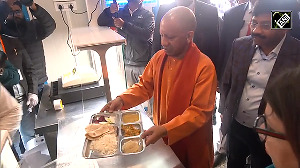Throughout the past century, reinforced concrete has been the material of choice for the average bridge span. There are sophisticated suspension and cable-stayed systems to support those bridges, but the basic span is usually concrete, and often the foundation is as well. Now Britain's Highways Agency is pioneering a new bridge material: plastic. Of course, it's not the same plastic we use for Tupperware containers and children's toys.
Fiber-reinforced polymers (FRP) form the superstrong yet light structure that is being created off-site and will be installed on to the M6 Motorway near Lancashire, England. It will be the first time that FRP, first used for footbridges, will be called upon to support vehicles.
Not only does the new material allow for more efficient building (reducing both agency cost and construction-related traffic delays), but it will be two-thirds the weight of the previous bridge structure and stronger -- with the capacity to carry up to 40 tons.
In fact, the material boasts a strength-to-weight ratio higher than that of steel or concrete. Maintenance will also be minimal as the plastic is not easily damaged by water or salt, thereby reducing long-term costs for the roughly $3.7
Covering the globe
The use of FRP in the M6 Motorway is just one example of how new materials such as glass and engineering techniques such as cantilevered driving-lanes are allowing construction of bridges that are stronger and longer than anything built previously.
The Rion-Antirion Bridge in Greece, for instance, links the Pelopponesians to the mainland -- a connection first proposed centuries ago. The proposed Messina Bridge would connect Sicily to Italy across one of the most seismically active sea beds.
Using cables and new suspension techniques, these bridges traverse bodies of water that were once too deep, too soft-floored, or too earthquake-prone for conventional methods. Others solve traffic problems and reduce congestion, serving as important conduits in urban planning and even commerce.
Click here to see some of the world's most innovative bridges -- most already built or mid-construction, and one still in the funding phase.






 © 2025
© 2025